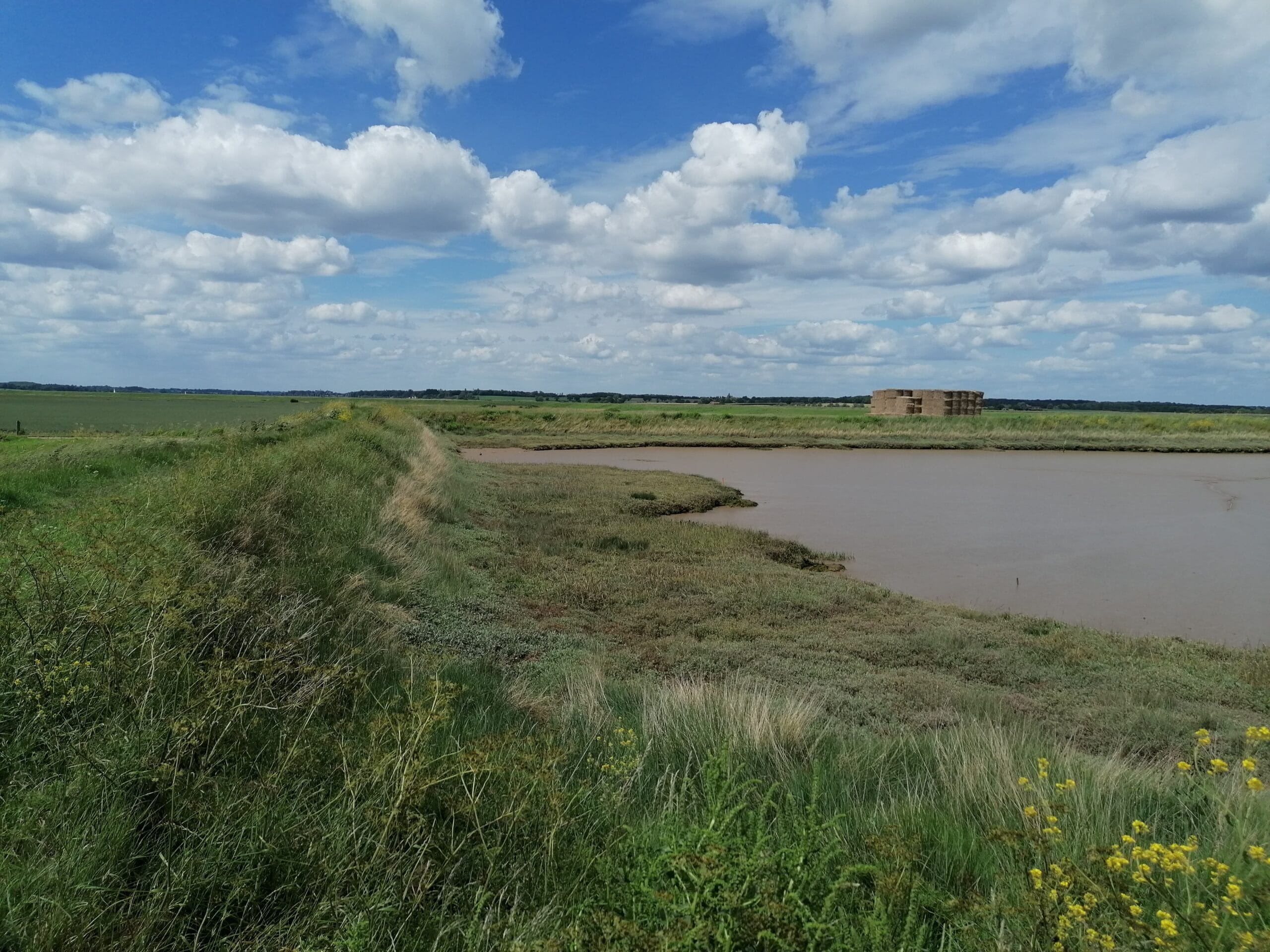
TEP was delighted to assist Anglian Water Services, Water Resources East and Enabling Water Smart Communities with the publication of a suite of new reports exploring the role that non-potable water reuse could play in strengthening long-term water resilience. Published under the National Framework for Water Resources, the work identifies where recycled water could support industrial and agricultural needs.
TEP wrote an International Best Practice Review, drawing on case studies from reuse-leading nations such as Spain, Israel and the USA. The work was informed by TEP Associate Thomas Young’s insights from his Nuffield Farming Scholarships Trust research into global water security, alongside hydrology expertise from Pluviam Environmental Ltd. The report will support the development of the updated National Framework for Water Resources and its implementation, led by the Environment Agency.
Read the full reports here.
Below we introduce the alternative water sources assessed in the report, highlighting their potential for non-potable reuse.
Internal Drainage Boards (IDBs) are local public bodies that manage water levels within a specific area. Water from IDB’s has historically been viewed as ‘problem’ drainage water during high winter flows, and discharged to main watercourses or marine environments through networks of drainage ditches, sluice gates and high-capacity pumps.
The vast volumes of water which leave IDBs could be utilised for non-potable uses due to its relatively clean nature, presence in a water transport network and management by recognised and experienced organisations. However, due to the seasonal nature of IDB drainage water, less water is available for reuse during high demand summer months, thus requiring the storage of winter drainage water.
📋 Case Study – Felixstowe Hydrocycle Water Reuse:
This innovative collaboration between local authorities and farmers was in development for over 10 years and was driven by a supportive local authority (Suffolk County Council). It required significant engagement with multiple stakeholders to: a) define the local issue (water security for farmers and untapped resources); b) decide on a strategy to deal with the problem; c) identify funding mechanisms, and; d) implement a solution. The solution is technically simple, with current land drainage water intercepted and pumped to a series of farm reservoirs before it enters the sea. This provides farmers with a year-round water source to fill reservoirs, recharges groundwater, whilst also helping to prevent saltmarsh degradation at the drainage outlet.
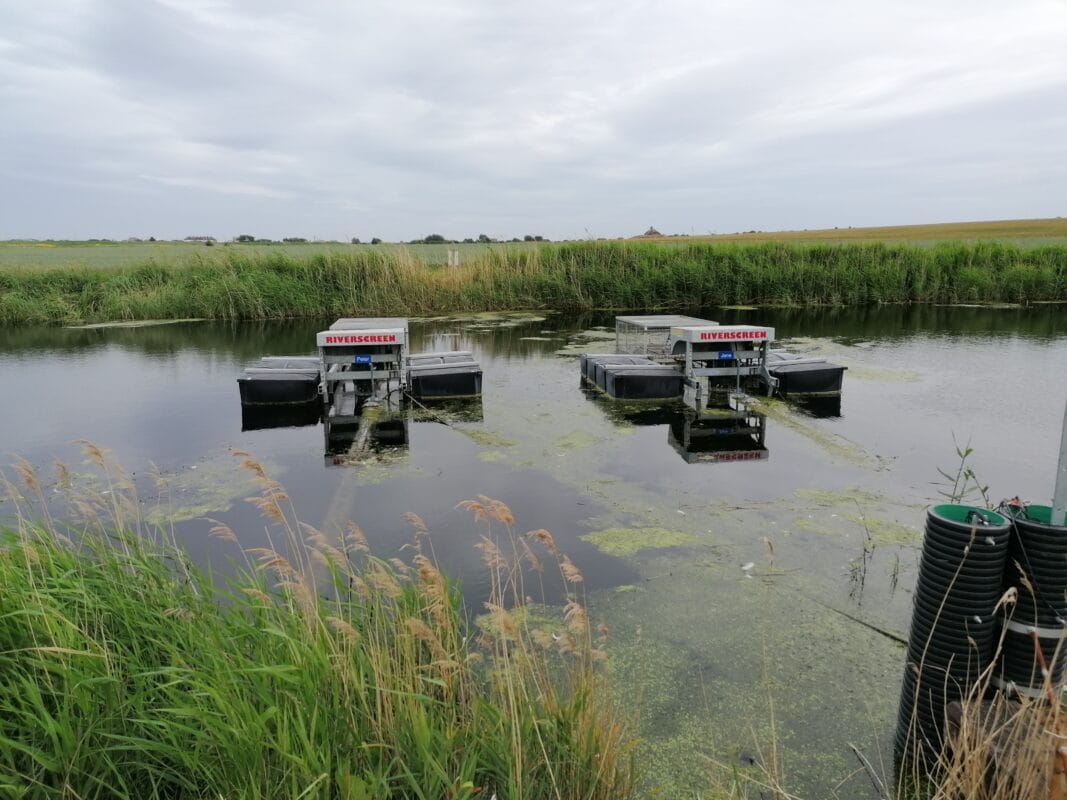
Waste sewage water is often piped to centralised sewage treatment plants. Here, wastewater undergoes a series of treatments so that it can be released into watercourses (known as Treated Sewage Effluent – TSE). The quality of this water is generally regulated so that minimum standards are met before it can be discharged. TSE can be used in agriculture, industry, landscaping and amenity, groundwater recharge and sometimes for non-potable uses within residential developments.
📋Case Study – Israel – Use of TSE Across Whole Water Industry:
Competitive pricing, volume caps on potable water for non-potable users, and clearly defined water standards for different types of crop were used to quickly move agriculture onto TSE in Israel, with around 80-90% of crops now irrigated with wastewater. A centralised water distribution network allows wastewater to be transported efficiently from source to areas of high demand. TSE water is also used in many public parks for irrigation and water features. These features are still accessible to the public but have appropriate warning signs in place.
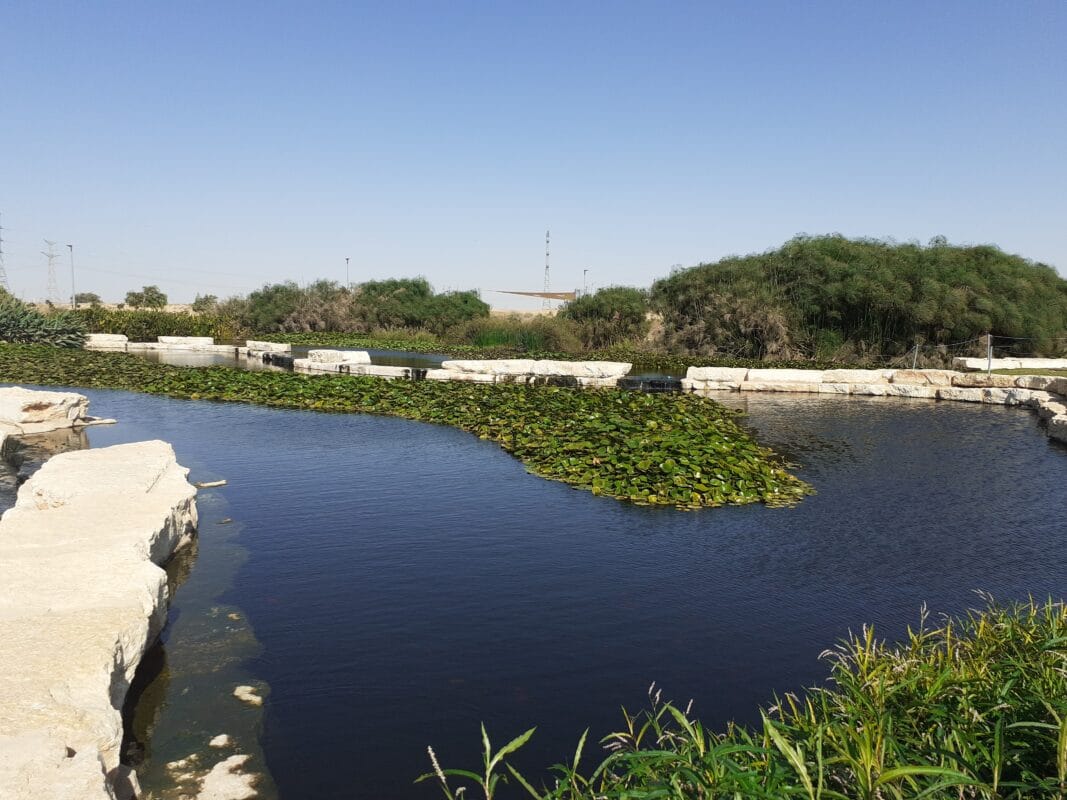
Industrial effluent refers to wastewater generated during industrial processes (e.g. food and drink production, chemical manufacturing, hospitals), usually of a lower quality than the water initially used. Typically, industrial effluent is treated to a certain level and then discharged back into the environment or the sewer system. It is becoming increasingly common for wastewater to be treated to a standard sufficient to be reused on-site for the same process, effectively creating a closed-loop system.
📋Case Study – USA – Frito-Lay Snack Food Plant, Arizona:
In 2010, Frito-Lay started to operate the first US based food processing plant to produce recycled wastewater at drinking water standards, for reuse in food production. The facility uses a 2,500m3 a day water treatment and recovery system to recycle up to 75% of the facility’s process water, reducing the plants annual water use by 380,000m3. The innovative advanced treatment system treats water to drinking water standards and mixes it with standard mains water to ensure it can be safely used to wash and move raw vegetables around the factory.
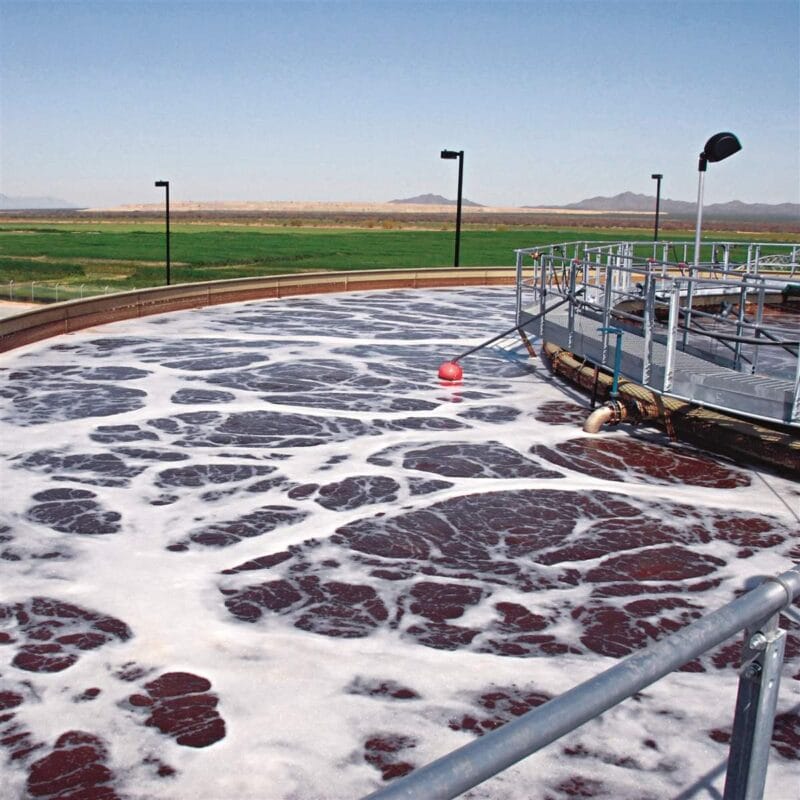
In urban areas where many surfaces are sealed by buildings and paving, natural infiltration is limited. Sustainable Drainage Systems (SuDS) allow drainage water to be stored for later reuse, rather than being immediately discharged, mimicking natural regimes. Water is actively drained into areas of soft landscape, such as rain gardens, swales, infiltration basins, tree pits, or retention ponds. This reduces flow rates and increases water treatment. Crucially the first step of a SuDS system should be to reuse the water captured, rather than let it drain away.
📋Case Study – Germany – Arkadien Asperg, Stuttgart:
Arkadien Asperg is an urban village where water-sensitive design dominates. A watercourse flows through the village, with drainage directed into it via a series of landscape-dominated drainage features. Fourteen storage tanks hold up to 60m3 of water, which is then used for irrigation, toilet flushing, washing and to top up the watercourse. Play spaces are designed to be floodable, providing further capacity for on-site attenuation.
Highway drainage has historically been concerned with removing water from road surfaces as quickly as possible to maintain road safety. SuDS on smaller roads are becoming more widespread to improve water quality and allow for water re-use in local landscape and amenity areas.
📋Case Study – Global – Roads for Water Consortium:
The Roads for Water Consortium is a global alliance of organisations organised by MetaMeta, aiming to promote road water harvesting. With 20% of the worlds land surface within 1km of a road, the consortium aims to provide advice and guidance on how best to construct and adapt roads for water harvesting and reducing runoff pollution and erosion, focused on areas facing severe poverty.
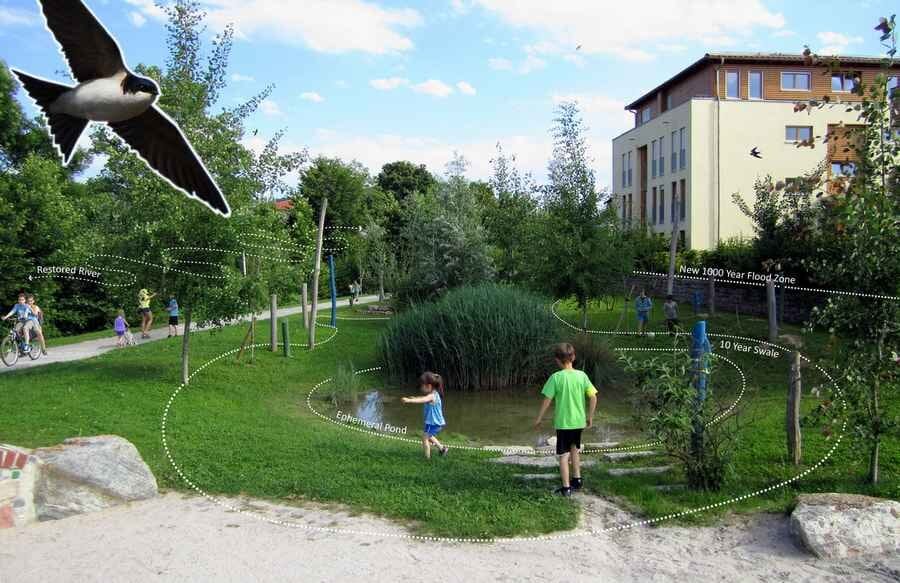
Rainwater from roofs is a readily available resource with significant reuse potential. It is generally captured and channelled into piped drainage systems. Rainwater harvesting is the act of capturing and storing this water for reuse. These methods have been used globally for millennia at various scales and serve as a primary source of water in many developing countries.
📋Case Study – Japan – Ryogoku Kokugikan – Sumi wrestling facility:
The 8,400m2 roof drains rainwater into a 1,000m3 tank, which is used to supply water to ~70% of the stadium’s toilets and air conditioning units. This water can also be used as an emergency water supply after earthquakes, and to melt snow on the roof. The local municipality now also offers subsidies to help install rainwater harvesting projects.
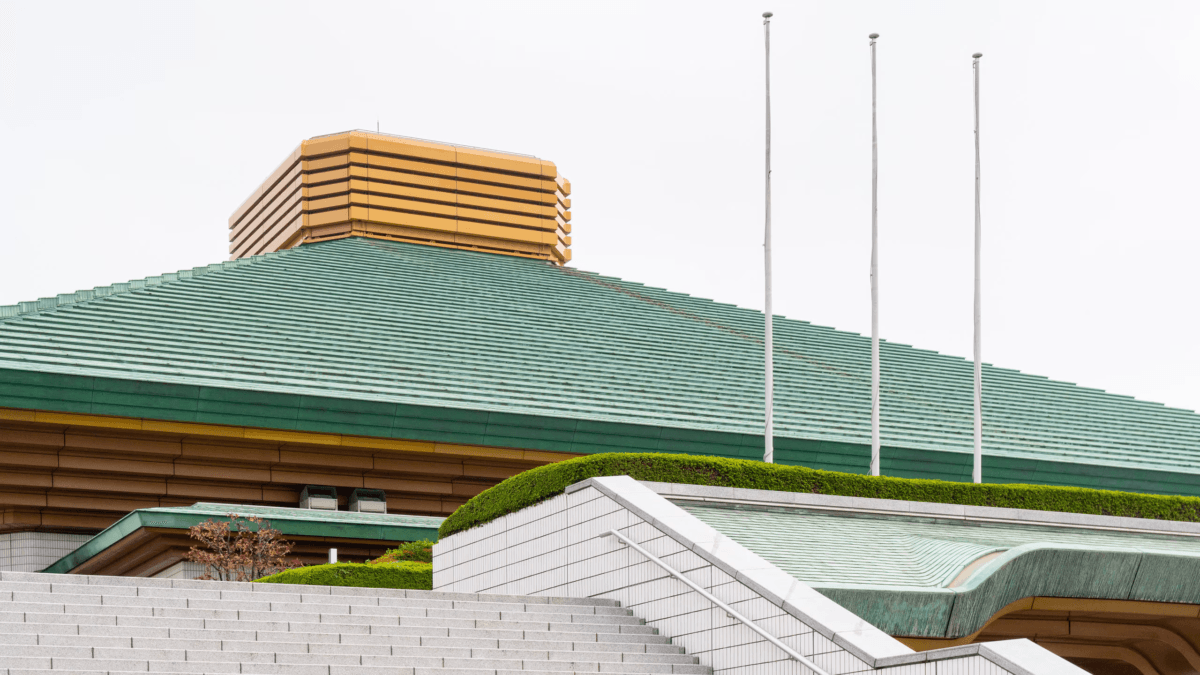
Greywater includes all non-blackwater domestic wastewater, such as from washing machines, basins, dishwashers, showers, and baths. In developed countries, greywater production per household is in the range of 60–200 litres per day. It generally contains low concentrations of microbial, organics and nutrients, which can be treated on-site through small treatment systems, or through constructed wetlands.
📋Case Study – Australia – Grey Water Reuse – Rouse Hill Water Resource Recovery Facility:
Most major Australian water recycling projects were implemented in response to The Millennium drought (2001-2009), as well as due to restraints placed on discharge from wastewater treatment plants. Australia’s largest residential recycling scheme is the 32,000 home Rouse Hill development in northwest Sydney which supplies toilet flushing, clothes washing, garden watering and car washing, reducing potable water demand by 40%. Use was approved on irrigating local fruit and vegetable crops in 2012. The effluent undergoes tertiary treatment, supplying 200,000m3 of recycled water a year, with excess quantities discharging to wetlands.
Air conditioning condensate is the water that forms when warm, humid air passes over the cold evaporator coils in heating, ventilation and air conditioning (HVAC) systems. As the air cools, moisture condenses and collects, typically draining away through a condensate line. The byproduct is essentially distilled water. Water can be used locally with minimal storage needed onsite due to constant production of water during warm weather. Likely non-potable applications include toilet flushing, car washing, irrigation and cooling water.
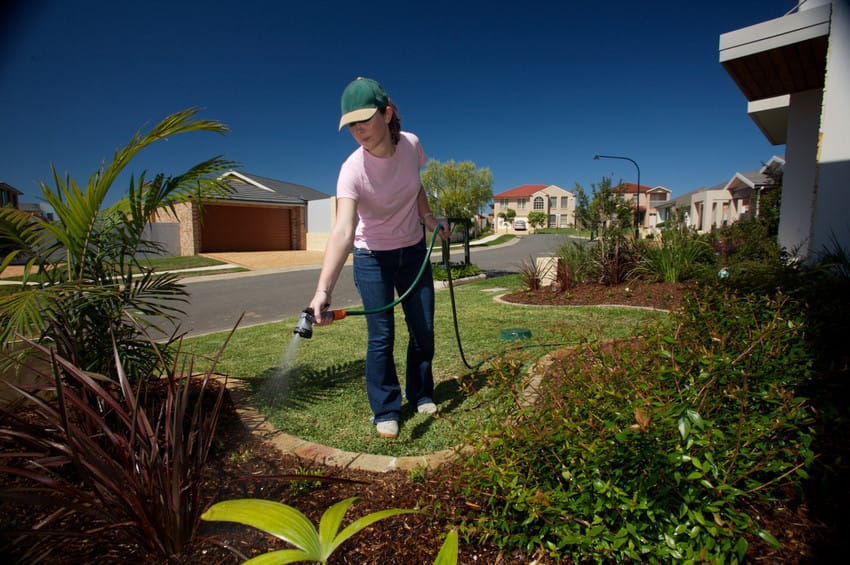
Polluted groundwater and mine water might not sound like ideal resources, but with the right treatment, they could help strengthen long-term water resilience. With case studies from California and South Africa, we look at how polluted groundwater and mine water are already being used around the world, and what lessons we can take from them.
Groundwater is a vital source of water for potable and non-potable uses. It can become polluted by a range of contaminants from a point source or across wider catchments. Depending on the level of contamination, polluted groundwater can be used directly for non-potable uses. This often occurs when no other viable water sources exist.
Aquifers can be artificially recharged through intentionally adding water. This is often achieved by using wastewater from other sources (such as treated sewage effluent, flood water, Internal Drainage Boards, urban runoff) and adding into the aquifer through either large infiltration ponds or injecting it into deep wells. This approach can help to dilute or prevent contamination, making water available for reuse.
📋Case Study – Orange County Ground Water Replenishment System (GWRS), California:
Due to an over abstracted ground aquifer which was becoming increasingly saline, a GWRS was set up in Orange County, California in 2008. The facility takes treated sewage water and passes it through a series of osmotic membranes to produce ultra-pure water. The water is then pumped into the ground aquifer for later abstraction. Excess stormwater from the rivers within the catchment is also stored in conventional infiltration ponds to supplement ground recharge.
Water is actively pumped from operational mines to prevent flooding and enable continued extraction. Once mines are closed, pumping ceases, and water levels within the mine recover, effectively flooding the mine. Water quality from mines is often compromised, with a range of pollutants present.
📋Case Study – South African Mine Industry:
South Africa is leading on the reuse of mine water, with significant efforts made to provide industry guidance and strategy. Numerous trials have been conducted with mine water in agriculture, including the successful use of lime treated gypsiferous water (high levels of calcium sulphate), successfully used on various field screening trials of over 20 crops at Witbank, Mpumalanga, with no negative impacts on crop yield or leaf burn.
Efforts have also been made in South Africa to introduce guidelines for mine owners to investigate and apply for the correct permits to reuse wastewater from mines. The guidance has been put together by the South African Water Research Commission (WRC) and focuses on gaining the correct regulatory approvals, and technical guidelines for using this water for irrigation. The documents help to highlight current gaps and contradictions in current South African water use regulations, and how best to navigate these.
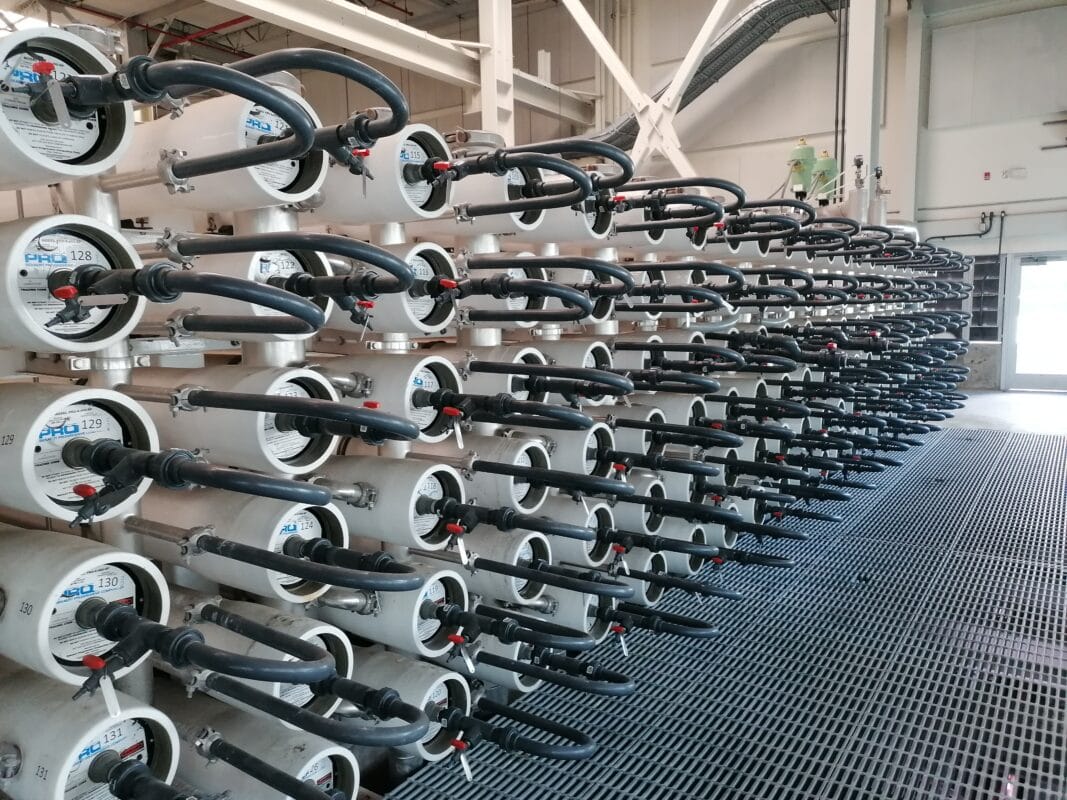
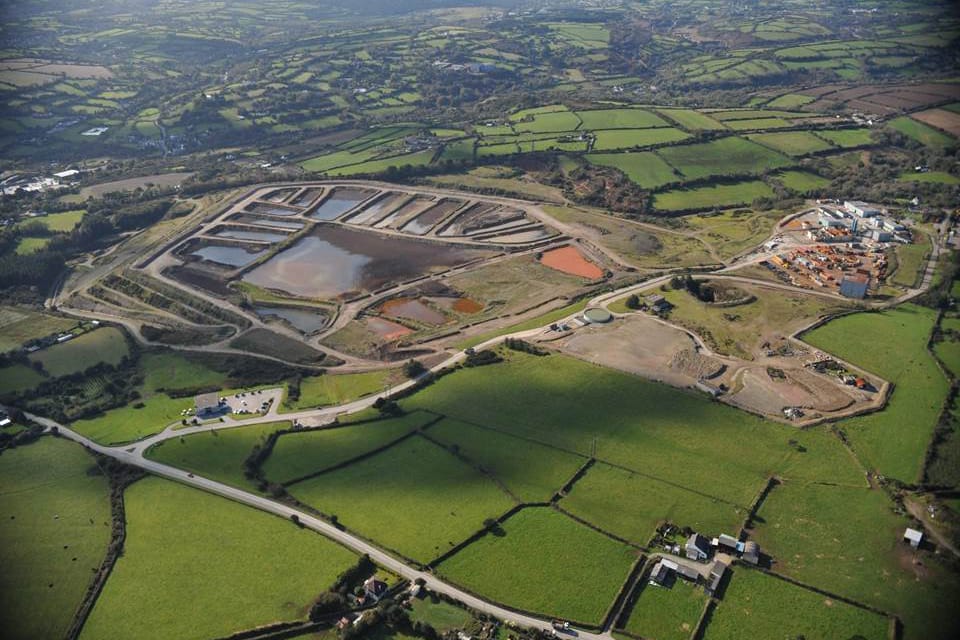
If you’d like to discuss any of these ideas further or explore how they might apply to your work, please get in touch!








